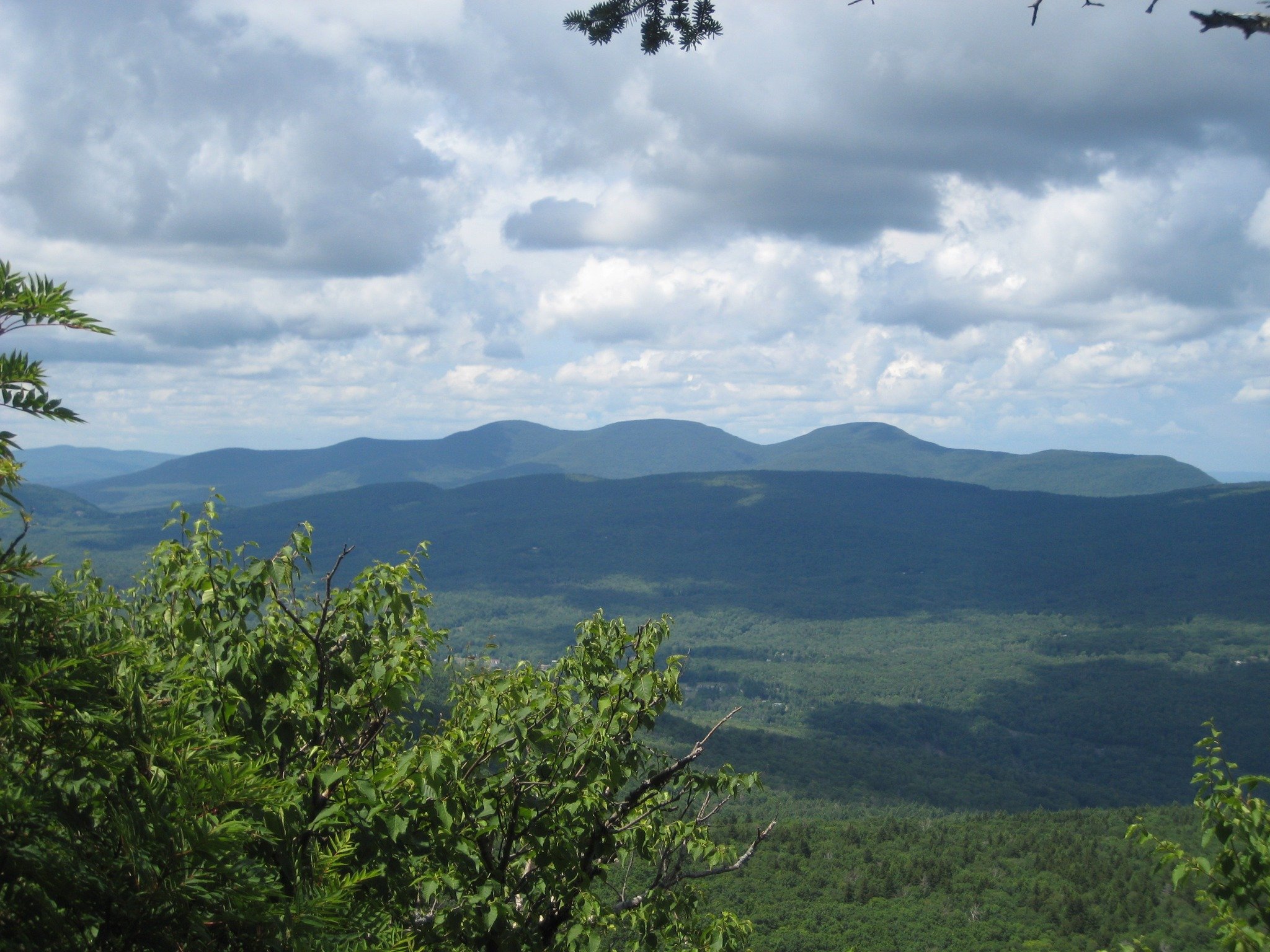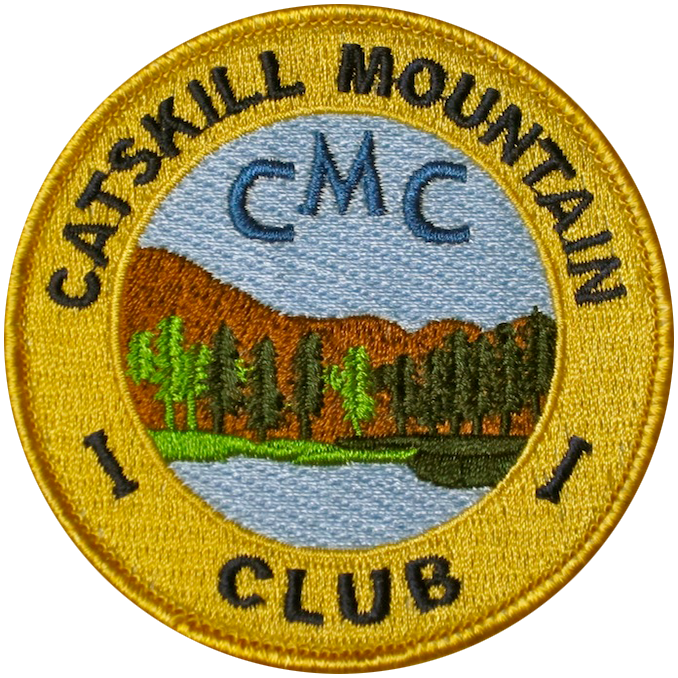
Recreation Use Regulations
-

Recreational Use Regulations for the Catskill Park Forest Preserve
The NYS Department of Environmental Conservation manages many public lands in New York State, including the Catskill and Adirondack State Forest Preserves and many other State Forests.
-

Recreational Use Regulations for NYC Watershed Lands
Many New York City water supply reservoirs and lands are open to the public for low-impact recreational activities.
Recreational Use Regulations for the Catskill Park Forest Preserve
The NYS Department of Environmental Conservation manages many public lands in New York State, including the Catskill and Adirondack State Forest Preserves and many other State Forests. For recreational purposes, hiking and backcountry camping are allowed on Forest Preserve lands in the Catskill Park as well on other State Forest areas. Generally, camping is prohibited on Unique Areas, Wildlife Management Areas and other categories of state land. Hiking is generally permitted anywhere but special requirements apply to mountain biking and horseback riding.
For information about specific land areas contact the DEC Regional Office responsible for the area (listed below). For information about state campgrounds visit the Department’s web site www.dec.state.ny.us/website/do/or2top.htm.
The general rules and guidelines for the use of New York State’s public lands are as follows:
Hiking parties are limited to no more than 20 persons. A permit must be obtained for larger groups. (The recommended limit is 12 in wilderness areas.)
Except where marked by a “Camp Here” disk camping is prohibited within 150 feet of roads, trails, lakes, ponds, streams or other bodies of water.
Camping groups of ten or more persons or stays of more than three days in one place require a permit from the New York State Forest Ranger responsible for the area.
Lean-tos are available in many area on a first come first served basis. Lean-tos cannot be used exclusively and must be shared with other campers.
Use pit privies provided near popular camping areas and trailheads. If none are available, dispose of human waste by digging a hole 6″-8″ deep at least 150 feet from water or campsites. Cover with leaves and soil.
Do not use soap to wash yourself, clothing or dishes within 150 ft of water.
Drinking and cooking water should be boiled for 5 minutes, treated with purifying tablets or filtered through filtration device to prevent instances of giardia infection.
Fires should be built in existing fire pits or fireplaces if provided. Use only dead and down wood for fires. Cutting standing trees is prohibited. Extinguish all fires with water and stir ashes until they are cold to the touch. Do not build fires in areas marked by a “No Fires” disk. Camp stoves are safer, more efficient and cleaner.
Carry out what you carry in. Practice “leave no trace” camping and hiking.
Keep your pet under control. Restrain it on a leash when others approach. Collect and bury droppings away from water, trails and camp sites. Keep your pet away from drinking water sources.
Observe and enjoy wildlife and plants but leave them undisturbed.
Removing plants, rocks, fossils or artifacts from state land without a permit is illegal.
The storage of personal property on state land is prohibited.
Carry an approved flotation device for each person aboard all watercraft.
Except in an emergency or between December 21 and March 21, camping is prohibited above an elevation of 3,500 feet in the Catskills.
At all times, only emergency fires are permitted above 3,500 feet in the Catskills.
NYSDEC Regional Offices for the Catskill Region:
Region 3 (Sullivan & Ulster counties)
21 South Putt Corners Road
New Paltz, NY 12561-1696
(845) 256-3000
Region 4 (Otsego, Delaware, Schoharie & Greene counties)
Route 10
Stamford, NY 12167-9503
(607) 652-7365
Recreational Use Regulations for NYC Watershed Lands
Many New York City water supply reservoirs and lands are open to the public for low-impact recreational activities.
In order to responsibly provide recreational access to City property, DEP issues a comprehensive permit “The Access Permit” that allows for fishing, hunting and hiking on certain designated areas in the watershed. Other areas are referred to as “Public Access Areas” and are open to all without a permit. Access permit holders may also obtain a DEP boat tag for keeping a rowboat or sailboat at one of the reservoirs. You can now obtain a NYCDEP access permit online! Just fill out the online form here and print out your permit from NYCDEP’s Watershed Recreation webpage. It’s that simple.
Fishing
Boating for the purposes of fishing is allowed on NYC reservoirs to those with the appropriate DEP permits. Anglers must store their fishing boats at designated storage areas. All boats must be approved and registered with DEP. People who want to register a new boat must first obtain a valid access permit and then call the Land Management Office near the reservoir of interest to make a steam cleaning and registration appointment (There is no cost for this service, which must be performed by DEP):
Ashokan Reservoir: (845) 657-2663
Schoharie Reservoir: (607) 588-6231
Rondout and Neversink Reservoirs: (845) 985-0386
Cannonsville and Pepacton Reservoirs: (607) 363-7009
Fishing is allowed on City-owned reservoirs, lakes and streams as designated by specific DEP signs and according to all applicable New York State regulations. Most City-owned reservoirs offer excellent fishing opportunities for both warm-water species such as smallmouth and largemouth bass, as well as cold-water species such as trout. City-owned reservoirs are open for fishing from shore and with fishing boats, and it is common for many reservoirs to produce 4-5 pound bass and lake trout exceeding 15 pounds! In addition to its reservoirs, DEP also offers City-owned watershed lands that border excellent trout fishing streams such as the Batavia Kill, West Branch Delaware River, Esopus Creek, and many smaller tributaries. Boating for the purposes of fishing is allowed on New York City reservoirs to registered individuals having the appropriate DEP Access Permit and Boat Tag. Angler maps can be found here.
Recreational Boating
DEP allows recreational boating (canoes, kayaks) at the Cannonsville Reservoir, the Pepacton Reservoir, the Neversink Reservoir and the Schoharie Reservoir. What do you need to participate? A permitted vessel, a Personal Floatation Device(s) (PFD), a Free DEP Access Permit, a DEP Recreational Boat Tag (Temporary or Season Tag). What do you need to do? Have your vessel steam cleaned at a participating DEP-approved steam cleaning vendor. Steam cleaning vendors may charge a fee for the steam cleaning services. Some vendors now keep rental boats on site at the reservoirs. Renters need to visit the vendor to pay, get paddles and get PFDs. More details, including maps and locations of steam-cleaning locations can be found here.
Hunting
DEP allows both big and small game hunting on designated city-owned watershed lands. Designated hunting areas are available for bow, shotgun, rifle, handgun, and muzzleloader hunting where permitted by New York State regulations. Hunters and trappers must possess a valid New York State hunting license and they must follow all applicable New York State hunting regulations, including weapons restrictions, species restrictions, and hunting during the proper seasons for the allowed game. Although DEP no longer issues separate hunting tags and DEP Access Permits are no longer required on “Public Access Areas,” DEP Access Permits are still required on those properties posted with signs that read “Entry by Permit”. To learn more about the program, click here.
Hiking
Although hiking is not allowed immediately around New York City reservoirs, hiking (including cross country skiing and snowshoeing) is allowed on many City-owned watershed lands that are marked with DEP signs stating “Entry by Permit” or “Public Access Areas.” All recreational users should pay very close attention to the types of signs that are present because properties marked with “No Trespassing” or “Posted” signs are not open for public use.
Some watershed lands have been improved to allow for better access and parking. In addition, many old logging roads exist that are well-suited for hiking, cross country skiing, or snowshoeing. Hikers are encouraged to visit designated hiking properties where they can often discover hidden treasures such as scenic waterfalls and breathtaking vistas. Dogs are generally allowed on City-owned lands but they must be well-behaved and controllable. Any animal waste should be promptly cleaned up and removed. To see maps of the open parcels click here and to learn more about the program, click here.


